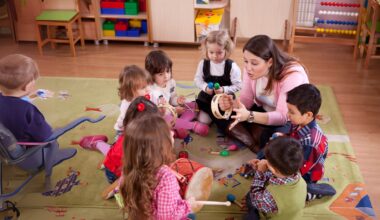In today’s educational landscape, fostering a sense of belonging in schools isn’t just a feel-good initiative—it’s a cornerstone of student success and emotional wellbeing. Belonging, at its core, is the feeling of being accepted, valued, and connected to a community. It’s both an emotional experience and a social process that helps shape how students see themselves and others.
As Social Emotional Learning (SEL) continues to gain traction in schools across the country, it’s clear that the skills taught through SEL directly support a culture of belonging. From empathy to perspective-taking, SEL empowers students and educators alike to build stronger, more inclusive communities where everyone feels like they matter.
What Is Belonging—and Why Does It Matter?
Belonging is more than just fitting in. It’s about being seen, heard, and valued for who you are. It’s about sharing your story and knowing that others genuinely care. Research shows that when students feel a sense of belonging at school, they’re more likely to attend regularly, engage in learning, form healthy relationships, and succeed academically.
But belonging doesn’t happen by accident. It’s built through intentional practices, inclusive mindsets, and the day-to-day interactions that create a safe, welcoming environment for all. It’s a journey, not a destination.
Building Belonging Through SEL: Skills That Make a Difference
Social Emotional Learning provides the framework for nurturing belonging in schools. Below are key SEL-aligned skills that lay the foundation for an inclusive and connected community.
1. Perspective-Taking
Helping students see the world through someone else’s eyes is a powerful step toward empathy and inclusion. Perspective-taking teaches students to move beyond their own experiences and consider others’ thoughts, feelings, and needs—building bridges instead of walls.
2. Empathy
Empathy goes a step further than understanding; it’s about feeling with others. When students are taught to recognize and relate to the emotions of their peers, they’re more likely to act with kindness and compassion, creating a culture of care within the school.
3. Respectful Communication
Belonging relies on honest, respectful communication. When students learn to express themselves clearly and listen actively, they build trust and deepen relationships. This also helps resolve conflicts peacefully and promotes a sense of psychological safety in classrooms.
4. Appreciation of Diversity
Schools are microcosms of the world. Teaching students to embrace and celebrate differences—in race, culture, ability, gender, and more—ensures everyone feels seen and respected. It also enriches classroom discussions and fosters a stronger, more empathetic community.
5. Relationship-Building
SEL supports the development of healthy relationships through cooperation, trust, and emotional understanding. Encouraging collaborative group work, buddy systems, and peer mentoring can strengthen the social fabric of the classroom.
6. Self-Reflection
Being aware of one’s own beliefs, biases, and behavior is crucial for personal growth. By guiding students through regular reflection, educators help them understand how their actions affect others and how they can contribute to a more positive school environment.
7. Social Engagement
When students get involved—whether through clubs, volunteering, or acts of kindness—they start to feel like active members of a community. These opportunities for engagement promote accountability and deepen students’ sense of purpose.
8. Critical Thinking in Social Situations
Not all conflict is rooted in ill intent. Teaching students to analyze social situations critically—asking what emotions are at play, what the motivations might be, and how the issue could be resolved—equips them with tools to navigate challenges constructively.
9. Respect for Others
Perhaps the most essential component of belonging is mutual respect. When students learn to treat everyone with dignity, regardless of differences, they create an atmosphere where inclusion is the norm—not the exception.
Together, these skills offer a powerful toolkit for building classrooms where students feel supported, understood, and part of something bigger than themselves.
The Educator’s Role: Belonging Starts With You
Belonging doesn’t simply emerge—it’s co-created. Educators play a vital role as facilitators, role models, and connectors. Their actions and attitudes set the tone for what is acceptable and valued within the school community.
A powerful message from a TED Talk on belonging states: “If you share your story, that story belongs to me as well.” This sentiment speaks to the importance of mutual storytelling and shared vulnerability. By opening up about their own experiences, educators encourage students to do the same. These exchanges help foster mutual understanding and a sense of ownership in the school’s collective identity.
Creating belonging takes intention. It requires:
- Showing up authentically – Being real and relatable helps students see you as someone who understands them.
- Actively listening – Giving students your full attention shows that their voice matters.
- Modeling inclusive behavior – Demonstrating respect, empathy, and curiosity every day teaches students how to do the same.
- Reflecting on your practice – Asking yourself, “Who feels left out? Whose voice isn’t being heard?” helps guide improvements to your teaching and classroom culture.
When educators take the lead in creating a culture of belonging, they set the stage for transformation—not just for students, but for the entire school community.
The Ripple Effect: Beyond the School Walls
Belonging in school has a ripple effect. When students experience acceptance and support in the classroom, they carry those feelings into their homes, friend groups, and future workplaces. They become better communicators, more empathetic citizens, and more engaged members of society.
Programs like Satchel Pulse, which support Social Emotional Learning and student mental health, are uniquely positioned to guide schools on this journey. Tools that help track SEL progress, identify at-risk students, and support relationship-building make it easier for educators to take meaningful action—turning abstract goals into real-world impact.
By embedding SEL into the fabric of daily school life, we create more than just strong academic outcomes—we create human-centered environments that prepare students for life.
Conclusion: Belonging as a Daily Practice
Belonging isn’t a one-time program or an annual initiative. It’s a daily, ongoing practice rooted in Social Emotional Learning. It requires patience, persistence, and a deep belief in the potential of every child to contribute meaningfully to their community.
Educators have the power to transform classrooms into communities, and students into changemakers. By teaching and modeling the skills that promote belonging, we not only shape better learners—we shape better people.
So ask yourself: How can I bring belonging to life in my classroom today? The answer may just begin with a story, a shared moment, or a simple act of listening.
Let’s imagine it—and let that imagination be the first step toward lasting change.



